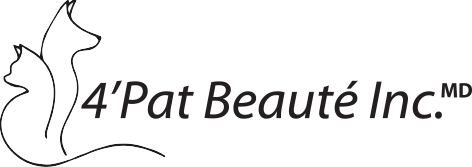100% pure natural real Cade oil
It is obtained by the dry distillation of Cade juniper wood (Juniperus Oxycedrus), an emblematic shrub of the Languedoc garrigues. The use of Cade wood and the oil extracted from it dates back to antiquity.
Uses of cade oil for chickens
Now let's see how to use cade oil in our small family farm of chickens.
• Cade oil to treat scabies on the paws
Caused by a haematophagous mite (which feeds on blood), invisible to the naked eye since it measures less than 0.5 mm: cnemidocoptes mutans, this form of dermatosis affects only the non-feathered epidermis of the hen, in the 'occurrence the legs.
How to recognize scabies on the paws
- Horny growths (lifting of the scales) which deform the paw.
- A formation of white-yellowish crusts resembling dried breadcrumbs
- A more or less significant deformation of the fingers
- A magnification of the legs
- Lameness
The deformations end up handicapping the affected subjects who can no longer put their feet down. In the more or less long term, a phalanx can break and cause a superinfection (with staphylococci or streptococci) fatal without antibiotic treatment administered in time. The disease progresses relatively slowly; it can develop for several months. The dorsal outer surface of the fingers is the first to be affected, then development continues on the inner plantar part of the paw.
Do not confuse scabies on the paws and aging
In some elderly subjects, there is a thickening of the legs and a lifting of the scales, symptoms similar to those mentioned above. These changes in scales should not be confused with scabies on the legs. However, if the doubt is important, it is better to deal with it. Indeed, the age of a subject does not protect them from this condition.
Treatment with cade oil
We have written a full article on Paw Scabies ›Paw Scabies.
• Cade oil to treat plucking scabies
Depluming scabies is caused by another mite: Cnemidocoptes Laevis. The plucked areas can be located on the back, on the neck, on the face, on the stomach… independently of each other or at the same time.
How to recognize plucking scabies
Family breeders rarely detect it at its onset. There are many causes of feather loss and there is not always cause for concern.
But if the featherless areas get bigger for no apparent reason and reveal the ends of the pipes; if the hen's condition worsens, if she seems to scratch more often, then a plucking scab may be suspected. It is very contagious, so it must be treated as soon as possible because in addition it causes severe itching.
Note: it should not be confused with plucking scab with moulting (which usually occurs once a year in the fall), or with pecking between hens. It is important to observe the behavior of your hens among themselves to know if the loss of feathers can possibly be caused by pecking.
Treatment with cade oil
We have written a full article on the plucking scab available ›Plucking scabies chickens.
• Cade oil against red mites
Getting rid of red mites in a chicken coop can become a real struggle. It can take months before you are done. 2018 was a particularly prolific year, hundreds, if not thousands of breeders were affected by this scourge.
How to recognize a red mite invasion
Red mites live in dark corners, so if their numbers are small you might not see them just by peeking into the hen house.
It takes careful research by inspecting every nook and cranny, planks, perches, lifting the straw ... Sometimes the invasion is so large that the lice swarm all over the place, and it is in this case that the breeders can be stung. Marie, a silk hen breeder, recommends that you tape a folded white paper handkerchief on the perches in the evening. If red mites live in the coop you should find some inside.
Using cade oil in the henhouse
True cade oil can be used for prevention and after a complete cleaning and treatment of the hen house in case of an infestation of red mites. In this case, Valérie recommends brushing the perches with cade oil about twice a month. It can also be applied to the walls of the hen house. In this case, you can redo the operation 2 or 3 times a year.
• To avoid pecking
Pecking is a natural behavior in a group of hens. Some of these pecks are linked to the hierarchy in the group, others to possible nutritional deficiencies. It is when they become excessive and cause injury that action must be taken.
Use of cade oil in case of pecking
Valérie explains to us that in the event of pecking, cade oil is effective as a repellent against attacking hens and as a healing agent for attacked hens. Since very often, the pecking takes place in the same place, it is advisable to apply the oil of cade to the places plucked or damaged by the repeated pecks, 2 to 3 times a week until the wounds disappear then in maintenance once every 10 or 15 days if necessary.
Conclusion on cade oil for chickens
True cade oil is a real blessing for our chickens. Once opened, the contents of the jar can be kept tightly closed for 3 or 4 years without any problem. If you no longer need it for the care of your pullets, don't hesitate to use the remainder to brush perches and henhouses for the prevention of red mites.




